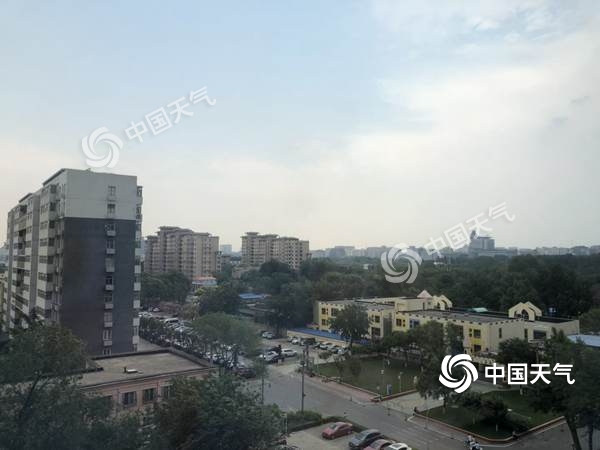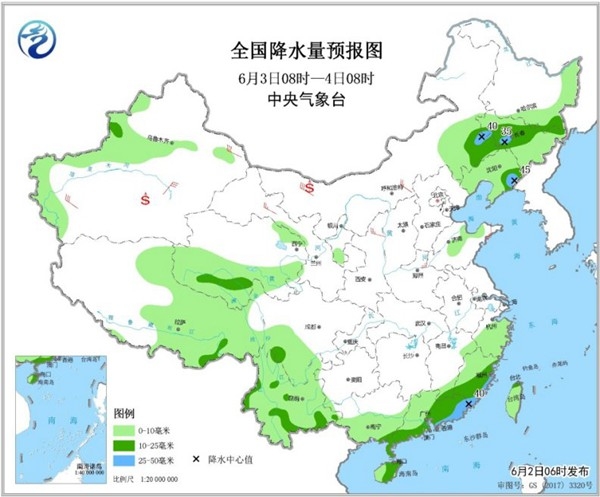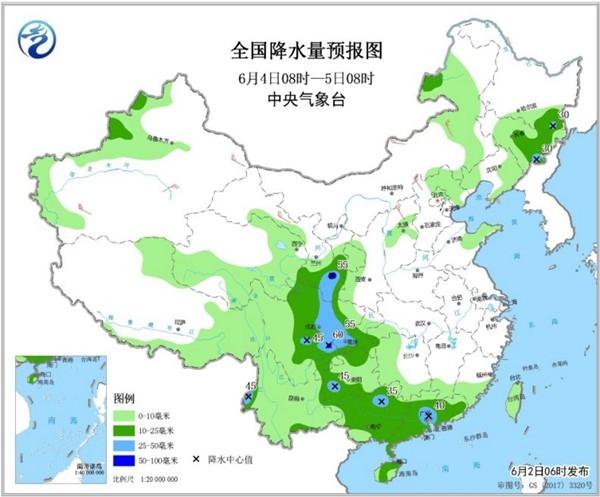The second round of high temperature in Huanghuai, North China "firepower" is fully open today, and heavy rainfall in South China on weekends.
CCTV News:According to the news of China Weather Network, from now on (June 2nd), the high temperature weather in North China and Huanghuai area will begin to develop, and the high temperature weather of 35 ~ 37℃ will appear in most areas, and the local area may even reach and exceed 40℃! In the south, heavy rainfall still prefers to "station" in South China. Today, heavy rain will mainly be concentrated in Guangdong and Fujian, and it will last until about the 3 rd, and the large-scale heavy rainfall weather process in the south will stop briefly.
Exposure+dry heat The highest local temperature in Huanghuai, North China is 40℃+

In the next few days, the central and southern parts of North China and Huanghuai areas will be controlled by the northwest airflow at high altitude, and the temperature will rise rapidly in sunny and hot weather. Yesterday, the high temperature in this area only appeared in a small range in southern Henan, northern Henan, southwestern Shanxi and other places. Today, the high temperature in the North China Plain will be fully fired and the high temperature territory will be rapidly expanded.
The invasion of this wave of "high temperature army" will reach its peak tomorrow and the day after tomorrow, and high temperatures will appear in southern Hebei, southwestern Shanxi, Shandong, Henan, northern Anhui, Hubei, southeastern Shaanxi and northern Hunan, and the intensity will also be upgraded. In big cities, Jinan has continuously predicted the high temperature for six days from today, among which the highest temperature is conservatively estimated to reach 37 ~ 38℃ tomorrow and the day after tomorrow, and Zhengzhou is not far behind. Today to the 4th, the highest temperature is expected to be above 39℃, and the local highest temperature even exceeds 40℃.
According to the analysis of meteorologists, this round of high temperature will mainly be presented in the form of exposure and dry heat. In the afternoon, the surface temperature may be 50 ~ 60 C, and the local temperature may even exceed 70 C. Remind the local public not to go out as much as possible in hot weather, and take measures such as sun protection and hydration to avoid causing high temperature heatstroke.
Heavy rainfall favors South China. Today, there is still heavy rain in Fujian and Guangdong.
In late May, the precipitation in southern China was more than normal, and the precipitation in southern Guangdong and southwestern Guangxi was more than twice as high as normal. Yesterday, heavy rainfall still stayed in the area from the south of the Yangtze River to South China, with heavy rain or heavy rain in parts of southern Jiangxi, southeastern Hunan, southern Zhejiang, central and western Fujian, central and eastern Guangdong, northeastern and southwestern Guangxi, southeastern Yunnan and northern Hainan, and heavy rains in Putian, Fujian, Guangzhou, Guangdong and Qingyuan.
Today, the range of heavy rainfall began to shrink, but South China is still the rhythm of being brushed by rain, and the heavy rain is mainly concentrated in Guangdong and Fujian. According to the forecast of the Central Meteorological Observatory, from 08: 00 on June 2 to 08: 00 on June 3, there were moderate to heavy rains in parts of southeastern Inner Mongolia, southeastern Jiangnan, Guangdong, southwestern Guangxi, southern Yunnan and Hainan Island, among which there were heavy rains in eastern Fujian, eastern Guangdong and southern coastal areas, Hainan Island and other places, with local heavy rains (100-130 mm). There are 4 ~ 6 winds in the central and western Inner Mongolia, the eastern part of Northwest China and Xinjiang. There is sand blowing or floating dust weather in southern Xinjiang basin and other places.

From 08: 00 on June 3 to 08: 00 on June 4, there were small to moderate rains in parts of eastern Inner Mongolia, south-central and eastern Northeast China, eastern Jiangnan, most of southern China, Yunnan, southern Sichuan Plateau, central and eastern Tibet, southern and northeastern Qinghai, and northwestern Xinjiang. Among them, there were heavy rains (25-40 mm) in parts of southeastern Inner Mongolia, western Jilin, eastern Liaoning, southeastern Fujian and southeastern Guangdong. There are 4 ~ 6 winds in parts of eastern and southern Xinjiang, Hexi in Gansu, northwestern Shaanxi, central and western Inner Mongolia and Shandong Peninsula. There is sand blowing or floating dust weather in southern Xinjiang basin and western Inner Mongolia.

From 08: 00 on June 4 to 08: 00 on June 5, there were moderate to heavy rains in parts of the southeastern part of Northeast China, southeastern part of Northwest China, southern Ningxia, northern and eastern parts of Southwest China, and most of southern China. Among them, there were heavy rains (50-60 mm) in southern Gansu, central and southern Sichuan Basin, and western Chongqing. There are 4 ~ 6 winds in parts of eastern and southern Xinjiang, Hexi in Gansu, northern North China and Liaodong Peninsula.

Meteorologists reminded that some areas of this round of rainfall overlap with the previous period, and short-term heavy precipitation is obvious in some areas. Jiangnan and South China also need to be alert to secondary disasters such as flash floods, geological disasters and floods in small and medium-sized rivers that may be caused by heavy rainfall and continuous rainfall.